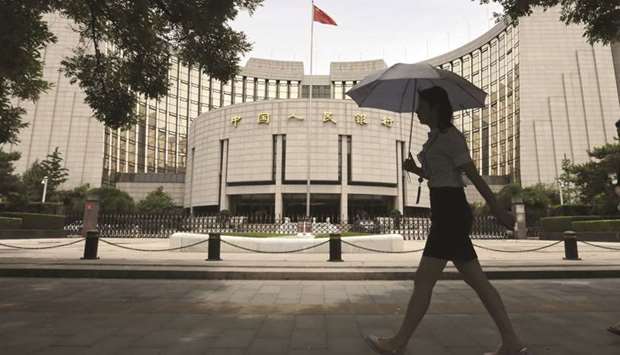China will pursue “neither loose nor tight” monetary policy to ensure basically stable liquidity, People’s Bank of China deputy governor Chen Yulu said.
The central bank will continue to implement “prudent and neutral” monetary policy, and create a “neutral and moderate” financial environment for supply-side reform, Chen told the Tsinghua PBCSF Global Finance Forum in Beijing yesterday.
Intensified measures by policy makers to cut financial leverage have spurred concerns over excessive tightening. The PBoC started to boost the cost of its money-market loans in the third quarter of last year, after the previous loosening cycle pushed benchmark interest rates to record lows.
Combined with a slew of tougher supervisory measures introduced by bank, insurance and security regulators, the PBoC’s tightening has made an impact. The seven-day repurchase rate, a benchmark for interbank liquidity, averaged 2.93% last month, the highest since March 2015, according to the National Interbank Funding Center. Mainland stocks have also been whipsawed in the process.
Chinese leadership has been vocal about fending off financial risk this year. “China has entered into an era which requires greater attention to financial security than ever before,” Wu Xiaoling, former PBoC deputy governor and now dean of Tsinghua PBCSF, told the same forum.
The central bank wants to lead the financial institutions to return to their original role of supporting the real economy, and hopes enterprises will be focused on their core businesses, reversing the tendency of “blindly” stepping into the financial sector, Chen said.
Chen also said the central bank will beef up support to high-end manufacturing and the “weak links” in the economy, while boosting direct financing and cutting funding costs.
The PBoC continues to make net injections by giving more loans via its Medium-term Lending Facility than the amount maturing each month, data compiled by Bloomberg show. The targeted and longer-term loans aim to offer liquidity support to the real economy.
Chen also expounded on the PBoC’s so-called Macro Prudential Assessment framework, a method for the central bank to evaluate banks’ capital to contain financial risks. He said the PBoC will do “profound research” on setting up an effective systemic-risk gauge and early warning system, and on developing MPA tools and coordinating monetary policy with the MPA mechanism.

The People’s Bank of China headquarters in Beijing. The PBoC continues to make net injections by giving more loans via its Medium-term Lending Facility than the amount maturing each month, data compiled by Bloomberg show.
